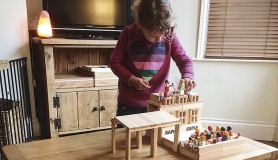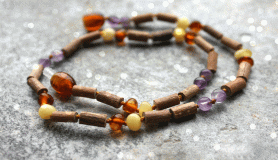Do the drugs work? Some argue that our current approach to heart health actually promotes fear, the complete opposite to the love our hearts need. Our current approach looks at the heart as an organ – a pump – without taking into consideration its importance as the wellspring of our emotions. We need to look at the heart not just as a physical organ, but as an emotional and spiritual part of our bodies as well.
A joyful heart full of love is a healthy heart. Any heart treatment needs to encompass all aspects of our heart health. The medical profession concedes that a stressful lifestyle is bad for heart health, and advise people to ease back on external stresses and take more exercise, but surely there must be other ways in which we can nurture and care for this precious, live-giving organ.
We know that poor diet, lack of exercise, smoking and stress all contribute to poor heart health. But what is often overlooked is the impact of depression, grief, lack of love, lack of connection and loneliness on our hearts. We use the expression ‘they died of a broken heart’ quite readily, without really thinking about the truth behind such a statement. Our heart is the place we give and receive love. What if schools taught kids meditations for the heart, how to care for and love each other, and how to pursue a life that brought them joy over one that brought them money or status? Would we see a decline in heart disease? Certainly, telling kids that a healthy diet, minimal stress and plenty of exercise equates good health seems to cut off an entire part of their existence; their spiritual and emotional selves. Until medicine in the west integrates the mind-body-spirit connection into its ethos, it seems people will continue to die from ‘physical’ disease.
So you’ve tackled your diet and started an exercise regime. But what other things can you do to care for the spiritual and emotional dimensions of your heart? Here are some ideas to get you started this National Heart Month:
Visualisation
Visualisation is one of our most powerful tools for health. It’s so simple that people often don’t believe it can actually have an effect – what, think yourself better?! – but research has shown that visualisation causes changes in blood flow to the visualised area, hormone production, and the release of neurotransmitters. Athletes use it during training to enhance performance, and even hospitals in America are beginning to wise up to the benefits. Find somewhere you can sit or lie comfortably without interruption for at least five minutes. Slow your breathing and still your mind. Visualise a glowing light around your heart filling you with health, love and happiness. Send love out into the world, starting with your family and friends and spreading your focus wider and wider until it encompasses the world and then the universe. Then bring the focus back to your own heart and draw all the universal love and energy back into your heart centre, repeating the mantra ‘I am love’.
What to read: Smile To Your Heart Meditations Simple Practices for Peace, Health and Spiritual Growth by Irmansyah Effendi
Do things that bring you joy
Plodding through life can leave you with an empty heart. We all know that feeling of sadness in our chest when life becomes a grind. When you feel it creeping it up, treat yourself as you would a dear friend. Treat yourself to a massage, an afternoon reading a good book or catching up with a friend over lunch. Actively seek activities that bring light, laughter and joy into your days. It can be hard as a parent to devote time to self-care like this, but doing so makes you a happier, more loving and centred person so the whole family benefits in the long run.
What to read: Heart Fire: Practices to Awaken, Expand and Engage Your Heart by Michael Faith
Wear green
Your chakras are the seven energy centres of the body. The heart chakra is the fourth, located near the centre of the breastbone or sternum, and represents our higher consciousness and love. It is perhaps the most important chakra, as it acts as the balance point for the others. When it is in balance we experience love, expansion, freedom and growth. Green is the colour associated with the heart chakra – the colour of nature – and it promotes abundance, health, creativity and harmony. Try wearing green to help balance your heart chakra. Crystals such as rose quartz are also helpful for healing the heart chakra, as are green stones such as emerald, green tourmaline, malachite, jade, peridot, aventurine, moss agate and green jasper.
What to read: Heart Disease (Advanced Chakra Healing) Cyndi Dale
Wear your heart on your sleeve
Do you often find yourself holding a little part of yourself back as a measure of self-protection? To truly ‘open your heart’ (notice all these heart-loving phrases in our everyday life?!), learning to trust others is key. Expect the best, and believe in the goodness of people and the world. Freeing yourself from negative thinking, gossiping and expecting the worst opens you up for more joyful, life-enhancing experiences. Save yourself from a ‘hardened heart’ by trusting, loving and believing more.
What to read: Your Heart And You: A holistic guide to a healthier heart by Elizabeth Wilde McCormick and Dr Leisa Freeman
Listen to soothing music
Researchers at Harvard University found that listening to music can lower blood pressure, slow the heart rate, and lessen anxiety in people hospitalized for heart ailments. It can ease pain and distress after cardiac surgery. In otherwise healthy people, music can lower blood pressure and ease stress. Choose music that makes you feel relaxed and uplifted, turn off the phone and get yourself in a horizontal position! The researchers suggest 20 minutes of listening or more for optimum benefit.
What to listen to: Opening the Heart CD (2 CDs of music, rhythms and breathing exercises to open your heart) by Layne Redmond
Forgive
Another Harvard study revealed that mentally nursing a grudge puts your body through the same strains as a major stressful event: Muscles tense, blood pressure rises, and sweating increases. A further study found a link between forgiving someone for a betrayal and improvements in blood pressure and heart rate, and a decreased workload for the heart. It makes sense: feeling angry ties us up in knots physically and emotionally and ends up, in almost all cases, doing far more harm to us than the person we’re angry with. Forgiveness is powerfully healing as it is an active, rather than a passive, choice. It’s a way of affirming our common humanity, and of freeing yourself up to enjoy your life.
What to read: The Quiet Heart: Putting Stress in Its Place by Peter Gruenewald
Hug often
Hugging one another increases levels of oxytocin (the feel-good hormone we have when breastfeeding and at orgasm etc.) and reduces blood pressure, say a team from the University of North Carolina who studied the effects of hugging on both partners in 38 couples. It seems women benefit more than men from hugging, as they also showed lower levels of cortisol, the stress hormone, in their blood after a hug. But we don’t really need research to tell us that hugging feels good. Set yourself a little goal of how many hugs you’re going to give a day and really enjoy them: stop and concentrate deeply on the person in your arms, sending love from your heart to theirs.
What to read: Come and Hug Me by Michal Snunit
Connect with others
There’s a reason we use the phrase ‘heart-to-heart conversation’. Really reaching out to others and connecting with them can have a huge impact on our physical as well as emotional health. Loneliness was associated with a higher risk of high blood pressure in a recent study of older people by Mental Health America. Another study, which took place over nine years, showed that people with strong social and community ties were two to three times less likely to die during the study. Actively seek out people who share your interests and beliefs and make time for real, human, face-to-face connection.
What to read: The Endorphin Effect: A breakthrough strategy for holistic health and spiritual wellbeing by William Bloom
Make love
A Scottish study of 24 women and 22 men who kept records of their sexual activity found that those who had sex regularly coped better with stress than those who didn’t. Diastolic blood pressure tends to be lower in people who live together and have sex often. That’s the dry academic side, but we also know that making love merges our energies with those of another. In a loving relationship, this makes us feel blissful, light-hearted, playful and happy, enhancing our life and promoting holistic health.
What to read: Great Sex Made Simple: Tantric Tips to Deepen Intimacy & Heighten Pleasure by Mark A. Michaels and Patricia Johnson







